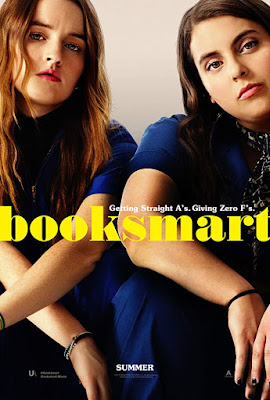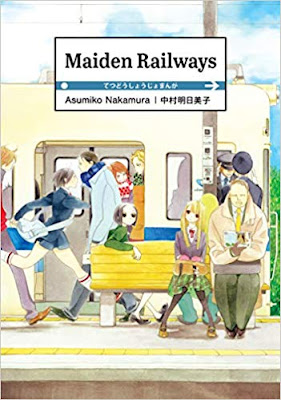Time out of Mind by Rachel Field -
8.5/10
I'm not sure how I stumbled upon "Time out of Mind" by Rachel Field, but it is a forgotten masterpiece. Written in 1935, but set in late 1800s Victorian America, it is a quietly heart-wrenching story about the impact of classes and gender on the fate of a young woman. Basically, it's like my favorite sort of book, a proto-feminist exploration of the complex strictures placed on womanhood by society.
Rachel Field is probably better known for some of her children's books, and her novels are fairly hard to track down (one of her main three novels is pretty much only available from the Australian project Gutenberg - I just got the other used this week). I'd never heard of her before, so my guess it it came up on some list of unknown female writers (I'm always scanning other people's lists for gems just like this) or I picked it up by chance because of the cover and blurb.
Time out of Mind is the story of a young servant girl's devotion to the misfit heir of a failing ship building dynasty in Maine and a masterly look at class dynamics in the Victorian age. It is a slow, thoughtful and heartbreaking story of a young woman, her place in society, and the subtleties and tragedies of love.
Time out of Mind is set in Maine in the later part of the 1800s, in a shipping town centered around the shipbuilding magnet Nathaniel Fortune. He owns the land, the trees, and employs many of the men in building huge multi-masted ships for international shipping. At the same time, steam powered vessels are just arriving on the scene and the writing is on the wall for wind-powered ships. But after generations, he cannot see the writing on the wall.
But this isn't really his story, although it is the essential backdrop for all the human drama. Instead, this is the story of Kate Fernald who comes to Fortune's Folley (as the manor house is known) as the child daughter of Fortune's new housekeeper. Upon arriving she meets Fortune's two children, Rissa (Clarissa) and Nat (Nathaniel III). From there, Kate lives a life half-way between the luxury of a rich family and that of a poor servant's daughter.
Rissa is the classic, somewhat spoiled, daughter of the town's wealthy family, the apple of her father's eye. Nat on the other hand is a small, delicate, sensitive soul, nothing like his father, and nothing like the robust sailors his father aspires him to be. Instead, Nat is drawn to music, but this is forbidden for him. Ultimately, he is sent as a young teen on a long voyage around Africa and to India on his father's new ship, the Rainbow, a ship with a tragic beginning as a man nearly dies launching it. Nat too nearly dies as a result of the voyage and Rissa vows then and there to protect her brother and his talent at all costs.
All this is told through Kate's eyes. She is an insider and and outsider at the same time with the Fortune children. They are her closest friends, and yet, she recognizes that there is no real closeness with Rissa. But Nat, she would do anything to watch him play music, to listen to his melodies, to study his face, unaware that these are the first blushes of love - a love for Nat that develops moment by moment, almost undetected. At the same time, as she enters her teen years and into adulthood, she is pursued by Jake Bullard, a hard-working and industrious young man hell-bent on making a name for himself in the town. On paper, they are a good match as he will elevate her beyond servant-hood and he treats her well during their long, 7 year courtship.
But this is only the setup to this incredible epic of love and loss. This is a long book, told with a slow, detailed pace, and we have only begun the dramatic climb. Rissa steals Nat away, against their father's wishes (by selling off land she was given for her 21st birthday) in order to fund his study of music over in Europe. After years away, with Kate and her mother continuing to serve Fortune and his failing business, Nat is ready to conduct his debut symphony back in New York. Kate promised Nat and herself when they were children, that she would hear his debut. Despite never having left their small town, she takes a risk that destroys her betrothal to Jake, and travels to New York to hear Nat's symphony.
From here, the tragedy of the Rainbow (the ship) and the collapse of the ship building industry collides with the fragility of masculinity (Jake Bullard and his jealousy), the downfall of Nathaniel Fortune, the rigid class system in which Kate is near the bottom, the destructive nature of fame and wealth (Nat), and the silently enduring love Kate feels for someone she can never truly be with. All this comes to a head and into the third act of this extraordinary novel beginning with her trip to New York.
Make no mistake, this novel does not have a happy ending, it is melancholy but resolved. That tone is perfect for the level of tragedy, restrictiveness of society, and the characterizations Ms. Field has set up. It's a slow-burn love story that gives the reader just enough payoff but also recognizes the ultimate futility of an inter-class relationship during Victorian times and handles that with quiet devastation and determination.
Kate Fernald is one of the greatest heroines I have ever read. She is sure of herself despite her "station," she is a hard worker, she is loyal, she combines a resolve with responsibility with a huge heart and a self-less nature. She is also stoic, a mirror for the hard salty townspeople, bearing her burdens silently and with dignity.
When the only way to keep herself and the house above float after the decline of the Fortune business, is to collect wild berries and sell them door to door to the rich summer families, she does it and finds the beauty in her time in nature, never concerned that she is humbling herself too much. She also holds her love for Nat sacred and close to her heart, it may be all consuming, but it also doesn't define her person-hood. There is a silent, honorable resignation to the realities of the world that keep her from being tragic.
But she is also an outcast. She is the daughter of a servant, but has spent most of her childhood learning the ways of the wealthy and befriending the wealthiest two children in the area. Many in the town look down on her for adopting some of the wealthy's mannerisms and speak. But she is also repeatedly shunned by the aristocracy and constantly put in her place as a servant. She moves through this with a singular focus on making the most of her life, preserving the Fortune home she loves, and being there should Nat ever need her. And after some tragedy, he finally does.
I won't give any spoilers to this final portion of the book, but it is emotionally intense, yet flows so naturally from all that came before. If I had any complaint about this section, it is that I'm not entirely certain there was enough insight into Nat's feelings over the years to fully justify his turn towards Kate (however temporary it may be). The very ending passages are also written in a more detached tone compared to the intimate writing which came before, almost feeling tacked on. But that style change could be interpreted as a manifestation of the great loss that was just experienced.
The writing is fairly dense. This is not a fast or breezy read. I could imagine cutting out half the words and the beauty of the story would survive. But at the same time, it's not a difficult read. It's not florid writing either, it's just a bit dense. And yet, the threads that weave themselves throughout the novel are all well supported and well resolved. The tragedies and setups link logically (other than perhaps a slightly dramatic final moment that breaks the overall subtlety of the rest of the novel).
Time out of Mind is a novel, set in the Victorian era, with a silently heroic female lead, determined to accept her place in society yet deeply in love with a young man she cannot be with, multiple threads that tie people and events and outcomes together in a masterly crafted story, with heartbreak, tragedy, and a lead who silently bears her lot in life and the inequities of the times.
If novels like Jane Eyre, The Awakening, Little Women, Wuthering Heights and similar works are your cup of tea, then Time out of Mind is an essential read (although written later). The writing is a bit long and some of the ending a bit overly dramatic compared to the restrained tone of the bulk of the style. But overall this is a gorgeous and affecting piece of literature. It gets a strong
8.5/10 and will stay in my thoughts for a long time. I can imagine rereading this again and again.
✩🚺
Note: you may find this very hard to purchase as it is out of print. In the US, a work is not in the public domain until 95 years after the authors death (1942 for Rachel Field). As this book is not part of the commonly studied literary cannon, is not widely known, and not yet in the public domain, it is also not yet available on Project Gutenberg. There are a few hardcover copies available on Amazon, Ebay, Albris and other sites, but I had a hard time finding another copy of the 1971 paperback edition I read. I'm not even sure where I purchased this copy. You may have better luck borrowing it from a library or finding a copy in a used book store.











